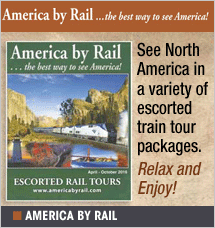Health, Wellness & the Good Life
Backyard Wildlife Habitat Gives Extra Enjoyment at Home

Backyard habitats provide us space for contemplation and quiet that electronics simply can't. Creating an outdoor habitat is easy and rewarding and it can also add value to your home. Such an area can be developed anywhere from the deserts of the Southwest to the mountains of New England to the tropics of Florida or Hawaii and everywhere in between. You don't even need a lot of land.
"Anyone can develop habitat," declares David Mizejewski, a naturalist with the National Wildlife Federation (NWF), which sponsors a Certified Wildlife Habitat program. "People with 50 acres, people with a little postage stamp — we even have one in Manhattan there's always some wildlife," he says. Backyard visitors can include butterflies and other insects, birds, bats, frogs, toads, turtles, lizards, and mammals.
Well-managed backyard habitats have many advantages. They can save water and energy, protect the soil and improve water and air quality by reducing dust, sediments and contaminants that enter the air, streams, and rivers. In addition, well-placed trees can shade a house in summer and reduce winter heat loss.
While it's certainly not necessary to have an officially recognized area, it adds personality and panache to a home. For certification, the NWF has three basic requirements: water (bird baths, ponds, streams), shelter (evergreens, shrubbery, woodpiles, bird houses), and food sources (feeders, fruiting and flowering plants and trees.)
Think Globally, Act Locally is a motto favored by NWF's Mizejewski. "You don't get much more local than your own backyard," he says, "and creating natural landscape saves time, money and labor in the long run."
When Sandy and her husband, Bill, moved into their beautiful new home 11 years ago, there were no mature trees and minimal landscaping. "There was no place for birds to come," she recalls. So they developed a Certified Backyard Habitat, shifting rocks to create pathways and a rock garden and even building a small pond and populating it with tadpoles from a nearby creek. Thrift shops provided building materials for birdhouses which Bill constructed with a grandson's "help."
"We used native and drought-resistant plants," Sandy explains, "and it wasn't expensive. I got a lot of gifts and cuttings from neighbors' existing plants." She made a particular effort to use butterfly-attracting plants and hung two hummingbird feeders. "Now we have birds and butterflies like crazy," she says happily. "There's not a tree or plant that isn't conducive to wildlife."
Sandy and Bill created what experts call a "beneficial landscape." Lawns are notoriously cost- intensive in terms of fertilizers, herbicides, pesticides, water and labor. On the other hand, a beneficial landscape takes care of itself for the most part because it recreates the local ecosystem with native plants that are likely to grow well without a lot of care. Maintaining a wild flower patch, for example, costs far less than the same area of lawn and while the initial cost might be higher, it is soon recovered. And you attract more butterflies and birds, too.
Happily, many of the trees, shrubs, cacti and flowers that benefit wildlife are also attractive to people. Having a variety of easy-care native plants can definitely add appeal to your home whether you have many acres or a tiny yard.
"One of the biggest values of developing a habitat," observes NWF's Mizejewski, "is the benefit of daily wildlife experiences. You can do something really good for yourself, for your local community, and for wildlife."
For More Information
There is lots of information available online. Visit the National Wildlife Foundation's website at: www.nwf.org for good information about Backyard Habitats.
Local garden stores and nurseries can provide guidance about commercially available native plants with information about light, water, and soil requirements, ease of growing, resistance to native animals, blossom color and more.
Lynn Pribus and her husband live in Charlottesville, Virginia, where their new NWF Certified Backyard Habitat attracts butterflies, birds, chipmunks, squirrels, raccoons, and deer as well as the occasional opossum, red fox, black racer snake, box turtle, and (on two memorable occasions) a bear.




























































